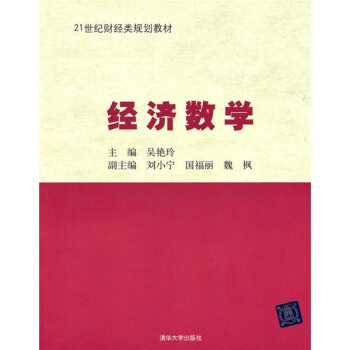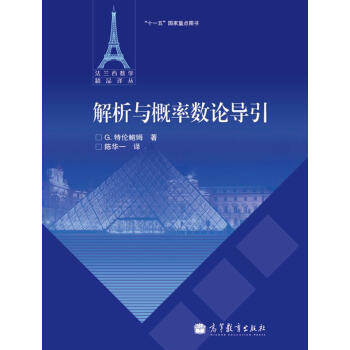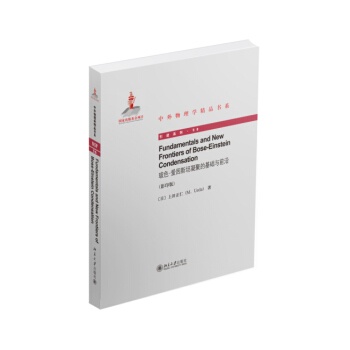

具體描述
編輯推薦
玻色愛因斯坦凝聚是神奇而富有魅力的物理現象。相關研究已經使多位科學傢獲得瞭諾貝爾奬。目前。關於冷原子的研究正蓬勃展開,玻色愛因斯坦凝聚正是其理論基礎。《中外物理學精品書係:玻色-愛因斯坦凝聚的基礎與前沿(英文影印版)》對於相關領域的研究人員來說是不可錯過的佳作。內容簡介
《中外物理學精品書係:玻色-愛因斯坦凝聚的基礎與前沿(英文影印版)》首先介紹瞭玻色-愛因斯坦凝聚(BEC)的基本理論。之後,《中外物理學精品書係:玻色-愛因斯坦凝聚的基礎與前沿(英文影印版)》討論瞭快速鏇轉BEC,鏇量和偶極BEC,低維BEC等近來發展迅速的方嚮。本書還介紹瞭平衡或非平衡費米液體超流,包括BCS-BEC交叉、幺正氣體、p波超流等。本書適閤本領域的研究者和研究生閱讀。作者簡介
(日)上田正仁,日本東京大學教授。目錄
Preface v1. Fundamentals of Bose-Einstein Condensation 1
1.1 Indistinguishability of Identical Particles . . . . . . . . . . 1
1.2 Ideal Bose Gas in a Uniform System . . . . . . . . . . . . 3
1.3 Off-Diagonal Long-Range Order: Bose System . . . . . . 6
1.4 Off-Diagonal Long-Range Order: Fermi System . . . . . . 10
1.5 U(1)Gauge Symmetry . . . . . . . . . . . . . . . . . . . . 11
1.6 Ground-State Wave Function of a Bose System . . . . . . 13
1.7 BEC and Superfluidity . . . . . . . . . . . . . . . . . . . . 15
1.8 Two-FluidModel . . . . . . . . . . . . . . . . . . . . . . . 20
1.9 Fragmented Condensate . . . . . . . . . . . . . . . . . . . 23
1.9.1 Two-statemodel . . . . . . . . . . . . . . . . . . . 23
1.9.2 Degenerate double-well model . . . . . . . . . . . 25
1.9.3 Spin-1 antiferromagnetic BEC . . . . . . . . . . . 27
1.10 Interference Between Independent Condensates . . . . . . 28
1.11 Feshbach Resonance . . . . . . . . . . . . . . . . . . . . . 31
2. Weakly Interacting Bose Gas 33
2.1 Interactions Between Neutral Atoms . . . . . . . . . . . . 33
2.2 Pseudo-PotentialMethod . . . . . . . . . . . . . . . . . . 36
2.3 Bogoliubov Theory . . . . . . . . . . . . . . . . . . . . . . 40
2.3.1 Bogoliubov transformations . . . . . . . . . . . . . 40
2.3.2 Bogoliubov ground state . . . . . . . . . . . . . . 45
2.3.3 Low-lying excitations and condensate fraction . . 48
2.3.4 Properties of Bogoliubov ground state . . . . . . . 50
2.4 Bogoliubov Theory of Quasi-One-Dimensional Torus . . . 54
2.4.1 Case of BEC at rest: stability of BEC . . . . . . . 55
2.4.2 Case of rotating BEC: Landau criterion . . . . . . 56
2.4.3 Ground state of BEC in rotating torus . . . . . . 59
2.5 Bogoliubov-deGennes (BdG) Theory . . . . . . . . . . . 60
2.6 Method of Binary Collision Expansion . . . . . . . . . . . 65
2.6.1 Equation of state . . . . . . . . . . . . . . . . . . 65
2.6.2 Cluster expansion of partition function . . . . . . 66
2.6.3 Ideal Bose and Fermi gases . . . . . . . . . . . . . 67
2.6.4 Matsubara formula . . . . . . . . . . . . . . . . . 69
3. Trapped Systems 73
3.1 Ideal Bose Gas in a Harmonic Potential . . . . . . . . . . 73
3.1.1 Transition temperature . . . . . . . . . . . . . . . 75
3.1.2 Condensate fraction . . . . . . . . . . . . . . . . . 76
3.1.3 Chemical potential . . . . . . . . . . . . . . . . . 77
3.1.4 Specific heat . . . . . . . . . . . . . . . . . . . . . 77
3.2 BEC in One- and Two-Dimensional Parabolic Potentials . 79
3.2.1 Density of states . . . . . . . . . . . . . . . . . . . 79
3.2.2 Transition temperature . . . . . . . . . . . . . . . 79
3.2.3 Condensate fraction . . . . . . . . . . . . . . . . . 80
3.3 Semiclassical Distribution Function . . . . . . . . . . . . . 81
3.4 Gross-Pitaevskii Equation . . . . . . . . . . . . . . . . . . 83
3.5 Thomas-Fermi Approximation . . . . . . . . . . . . . . . 84
3.6 Collective Modes in the Thomas-Fermi Regime . . . . . . 88
3.6.1 Isotropic harmonic potential . . . . . . . . . . . . 89
3.6.2 Axisymmetric trap . . . . . . . . . . . . . . . . . 91
3.6.3 Scissorsmode . . . . . . . . . . . . . . . . . . . . 92
3.7 VariationalMethod . . . . . . . . . . . . . . . . . . . . . . 93
3.7.1 Gaussian variational wave function . . . . . . . . 94
3.7.2 Collectivemodes . . . . . . . . . . . . . . . . . . . 96
3.8 Attractive Bose-Einstein Condensate . . . . . . . . . . . . 98
3.8.1 Collectivemodes . . . . . . . . . . . . . . . . . . . 99
3.8.2 Collapsing dynamics of an attractive condensate . 102
4. Linear Response and Sum Rules 105
4.1 Linear Response Theory . . . . . . . . . . . . . . . . . . . 105
4.1.1 Linear response of density fluctuations . . . . . . 105
4.1.2 Retarded response function . . . . . . . . . . . . . 108
4.2 Sum Rules . . . . . . . . . . . . . . . . . . . . . . . . . . . 109
4.2.1 Longitudinal f-sumrule . . . . . . . . . . . . . . 110
4.2.2 Compressibility sum rule . . . . . . . . . . . . . . 112
4.2.3 Zero energy gap theorem . . . . . . . . . . . . . . 114
4.2.4 Josephson sum rule . . . . . . . . . . . . . . . . . 115
4.3 Sum-Rule Approach to CollectiveModes . . . . . . . . . . 120
4.3.1 Excitation operators . . . . . . . . . . . . . . . . . 121
4.3.2 Virial theorem . . . . . . . . . . . . . . . . . . . . 122
4.3.3 Kohn theorem . . . . . . . . . . . . . . . . . . . . 123
4.3.4 Isotropic trap . . . . . . . . . . . . . . . . . . . . 124
4.3.5 Axisymmetric trap . . . . . . . . . . . . . . . . . 127
5. Statistical Mechanics of Superfluid Systems in a Moving Frame 129
5.1 Transformation toMoving Frames . . . . . . . . . . . . . 129
5.2 Elementary Excitations of a Superfluid . . . . . . . . . . . 131
5.3 Landau Criterion . . . . . . . . . . . . . . . . . . . . . . . 133
5.4 Correlation Functions at Thermal Equilibrium . . . . . . 134
5.5 Normal Fluid Density . . . . . . . . . . . . . . . . . . . . 136
5.6 Low-Lying Excitations of a Superfluid . . . . . . . . . . . 140
5.7 Examples . . . . . . . . . . . . . . . . . . . . . . . . . . . 141
5.7.1 Ideal Bose gas . . . . . . . . . . . . . . . . . . . . 141
5.7.2 Weakly interacting Bose gas . . . . . . . . . . . . 143
6. Spinor Bose-Einstein Condensate 145
6.1 Internal Degrees of Freedom . . . . . . . . . . . . . . . . . 145
6.2 General Hamiltonian of Spinor Condensates . . . . . . . . 146
6.3 Spin-1 BEC . . . . . . . . . . . . . . . . . . . . . . . . . . 151
6.3.1 Mean-field theory of a spin-1 BEC . . . . . . . . . 153
6.3.2 Many-body states in single-mode approximation . 157
6.3.3 Superflow, spin texture, and Berry phase . . . . . 161
6.4 Spin-2 BEC . . . . . . . . . . . . . . . . . . . . . . . . . . 163
7. Vortices 171
7.1 Hydrodynamic Theory of Vortices . . . . . . . . . . . . . 171
7.2 Quantized Vortices . . . . . . . . . . . . . . . . . . . . . . 174
7.3 Interaction Between Vortices . . . . . . . . . . . . . . . . 180
7.4 Vortex Lattice . . . . . . . . . . . . . . . . . . . . . . . . 181
7.4.1 Dynamics of vortex nucleation . . . . . . . . . . . 181
7.4.2 Collective modes of a vortex lattice . . . . . . . . 183
7.5 FractionalVortices . . . . . . . . . . . . . . . . . . . . . . 186
7.6 Spin Current . . . . . . . . . . . . . . . . . . . . . . . . . 187
7.7 Fast Rotating BECs . . . . . . . . . . . . . . . . . . . . . 189
7.7.1 Lowest Landau level approximation . . . . . . . . 189
7.7.2 Mean field quantum Hall regime . . . . . . . . . . 192
7.7.3 Many-body wave functions of a fast
rotating BEC . . . . . . . . . . . . . . . . . . . . 194
8. Fermionic Superfluidity 197
8.1 Ideal Fermi Gas . . . . . . . . . . . . . . . . . . . . . . . . 197
8.2 Fermi Liquid Theory . . . . . . . . . . . . . . . . . . . . . 200
8.3 Cooper Problem . . . . . . . . . . . . . . . . . . . . . . . 205
8.3.1 Two-body problem . . . . . . . . . . . . . . . . . 205
8.3.2 Many-body problem . . . . . . . . . . . . . . . . . 209
8.4 Bardeen-Cooper-Schrieffer (BCS) Theory . . . . . . . . . 211
8.5 BCS-BEC Crossover at T =0 . . . . . . . . . . . . . . . . 215
8.6 Superfluid Transition Temperature . . . . . . . . . . . . . 219
8.7 BCS-BEC Crossover at T _=0 . . . . . . . . . . . . . . . . 221
8.8 Gor'kov-Melik-Barkhudarov Correction . . . . . . . . . . 225
8.9 Unitary Gas . . . . . . . . . . . . . . . . . . . . . . . . . . 228
8.10 Imbalanced Fermi Systems . . . . . . . . . . . . . . . . . . 231
8.11 P-Wave Superfluid . . . . . . . . . . . . . . . . . . . . . . 234
8.11.1 Generalized pairing theory . . . . . . . . . . . . . 234
8.11.2 Spin-triplet p-wave states . . . . . . . . . . . . . . 238
9. Low-Dimensional Systems 241
9.1 Non-interacting Systems . . . . . . . . . . . . . . . . . . . 241
9.2 Hohenberg-Mermin-Wagner Theorem . . . . . . . . . . . 243
9.3 Two-Dimensional BEC at Absolute Zero . . . . . . . . . . 246
9.4 Berezinskii-Kosterlitz-Thouless Transition . . . . . . . . . 247
9.4.1 Universal jump . . . . . . . . . . . . . . . . . . . . 247
9.4.2 Quasi long-range order . . . . . . . . . . . . . . . 249
9.4.3 Renormalization-group analysis . . . . . . . . . . 250
9.5 Quasi One-Dimensional BEC . . . . . . . . . . . . . . . . 252
9.6 Tonks-Girardeau Gas . . . . . . . . . . . . . . . . . . . . 256
9.7 Lieb-LinigerModel . . . . . . . . . . . . . . . . . . . . . . 258
10. Dipolar Gases 261
10.1 Dipole-Dipole Interaction . . . . . . . . . . . . . . . . . . 261
10.1.1 Basic properties . . . . . . . . . . . . . . . . . . . 261
10.1.2 Order of magnitude and length scale . . . . . . . 263
10.1.3 D-wave nature . . . . . . . . . . . . . . . . . . . . 264
10.1.4 Tuning the dipole-dipole interaction . . . . . . . . 265
10.2 PolarizedDipolar BEC. . . . . . . . . . . . . . . . . . . . 266
10.2.1 Nonlocal Gross-Pitaevskii equation . . . . . . . . 266
10.2.2 Stability . . . . . . . . . . . . . . . . . . . . . . . 267
10.2.3 Thomas-Fermi limit . . . . . . . . . . . . . . . . . 269
10.2.4 Quasi two-dimensional systems . . . . . . . . . . . 271
10.3 Spinor-Dipolar BEC . . . . . . . . . . . . . . . . . . . . . 273
10.3.1 Einstein-de Haas effect . . . . . . . . . . . . . . . 274
10.3.2 Flux closure and ground-state circulation . . . . . 274
11. Optical Lattices 277
11.1 Optical Potential . . . . . . . . . . . . . . . . . . . . . . . 277
11.1.1 Optical trap . . . . . . . . . . . . . . . . . . . . . 277
11.1.2 Optical lattice . . . . . . . . . . . . . . . . . . . . 280
11.2 Band Structure . . . . . . . . . . . . . . . . . . . . . . . . 283
11.2.1 Bloch theorem . . . . . . . . . . . . . . . . . . . . 283
11.2.2 Brillouin zone . . . . . . . . . . . . . . . . . . . . 285
11.2.3 Bloch oscillations . . . . . . . . . . . . . . . . . . 286
11.2.4 Wannier function . . . . . . . . . . . . . . . . . . 287
11.3 Bose-Hubbard Model . . . . . . . . . . . . . . . . . . . . 288
11.3.1 Bose-Hubbard Hamiltonian . . . . . . . . . . . . 288
11.3.2 Superfluid-Mott-insulator transition . . . . . . . . 289
11.3.3 Phase diagram . . . . . . . . . . . . . . . . . . . . 291
11.3.4 Mean-field approximation . . . . . . . . . . . . . . 292
11.3.5 Supersolid . . . . . . . . . . . . . . . . . . . . . . 295
12. Topological Excitations 297
12.1 Homotopy Theory . . . . . . . . . . . . . . . . . . . . . . 297
12.1.1 Homotopic relation . . . . . . . . . . . . . . . . . 297
12.1.2 Fundamental group . . . . . . . . . . . . . . . . . 299
12.1.3 Higher homotopy groups . . . . . . . . . . . . . . 302
12.2 Order Parameter Manifold . . . . . . . . . . . . . . . . . . 303
12.2.1 Isotropy group . . . . . . . . . . . . . . . . . . . . 303
12.2.2 Spin-1 BEC . . . . . . . . . . . . . . . . . . . . . 304
12.2.3 Spin-2 BEC . . . . . . . . . . . . . . . . . . . . . 305
12.3 Classification of Defects . . . . . . . . . . . . . . . . . . . 306
12.3.1 Domains . . . . . . . . . . . . . . . . . . . . . . . 306
12.3.2 Line defects . . . . . . . . . . . . . . . . . . . . . 306
12.3.3 Point defects . . . . . . . . . . . . . . . . . . . . . 311
12.3.4 Skyrmions . . . . . . . . . . . . . . . . . . . . . . 313
12.3.5 Influence of different types of defects . . . . . . . 316
12.3.6 Topological charges . . . . . . . . . . . . . . . . . 318
Appendix A Order of Phase Transition, Clausius-Clapeyron
Formula, and Gibbs-Duhem Relation 321
Appendix B Bogoliubov Wave Functions in Coordinate Space 323
B.1 Ground-State Wave Function . . . . . . . . . . . 323
B.2 One-Phonon State . . . . . . . . . . . . . . . . . 327
Appendix C Effective Mass, Sound Velocity, and Spin
Susceptibility of Fermi Liquid 329
Appendix D Derivation of Eq. (8.155) 333
Appendix E f -Sum Rule 335
Bibliography 337
Index 347
前言/序言
用戶評價
我最近正在為我的畢業論文選題而苦惱,而BEC恰恰是我非常感興趣的一個方嚮。我希望這本書能夠提供一些前沿的、具有潛在研究價值的課題方嚮。書中是否會深入探討一些尚未完全解決的科學難題?例如,在強相互作用BEC、低維度BEC、或涉及復雜粒子相互作用的BEC體係中,有哪些值得進一步探索的物理現象?我希望書中能夠提供一些最新的實驗結果和理論模型的梳理,並對未來的研究趨勢做齣展望。對於我這樣即將走上科研道路的學生來說,能夠提前接觸到這些前沿信息,無疑是寶貴的財富。我特彆關注書中是否會涉及一些具體的數學工具和計算方法,這些是進行理論研究不可或缺的。例如,對於描述BEC的Gross-Pitaevskii方程,書中是否會詳細介紹其推導過程和求解方法?對於更復雜的相互作用,是否會引入量子場論或其他先進的理論框架?我希望這本書能夠成為我論文選題和研究的有力助手。
評分作為一名對物理學史和科學思想發展充滿興趣的讀者,我特彆看重一本好的學術著作所能提供的曆史視角和思想深度。這本書的“精品書係”定位,讓我相信它不僅僅是一本技術性的教科書,更可能蘊含著作者對BEC發展曆程的深刻洞察。我希望書中能夠追溯BEC概念的起源,從玻色-愛因斯坦的開創性工作,到後續的理論發展和實驗驗證,脈絡清晰地展現這一重要概念如何一步步走嚮成熟。書中是否會提及一些關鍵的科學傢和他們的貢獻?他們是如何一步步攻剋理論和實驗上的難關的?我很想瞭解BEC研究背後的人文故事和科學精神。同時,我也對BEC研究對其他物理學分支的影響感到好奇。它是否對凝聚態物理的其他領域,比如量子信息、量子計算、高能物理等産生瞭深遠的影響?或者,BEC的研究是否也從其他領域汲取瞭養分,從而得以蓬勃發展?我希望這本書能幫助我建立一個更廣闊的物理學知識體係,理解BEC在整個科學圖景中的位置。
評分這本書的到來,簡直是為我這個對量子世界著迷的“發燒友”量身定做的。我一直對BEC那種“不可思議”的超宏觀量子態感到著迷,仿佛是把微觀世界的奇異規則直接搬到瞭宏觀尺度上,讓人忍不住想一探究竟。我非常期待書中能夠細緻地講解BEC的“誕生”過程,從超冷原子技術的飛躍,到激光冷卻和蒸發冷卻的精妙設計,再到如何通過這些手段將原子冷卻到納開爾溫標以下,最終“凝結”成BEC。我對那些具體的實驗技術細節非常感興趣,比如各種光鑷、磁阱的原理和應用,以及如何精確地控製和探測BEC的性質。書中是否有關於如何搭建實驗裝置的圖解或描述?或者對於不同實驗體係(例如堿金屬原子、堿土金屬原子、分子BEC等)的優缺點進行比較分析?這些細節對於我理解BEC的實驗實現具有至關重要的意義。而且,我對於BEC的各種奇特性質,比如零粘度、長程相乾性、量子渦鏇等等,都有著強烈的好奇心,渴望書中能夠用清晰的語言和翔實的例子來解釋這些現象背後的物理機製。
評分終於收到這本夢寐以求的《中外物理學精品書係:玻色-愛因斯坦凝聚的基礎與前沿(英文影印版)》瞭!拿到手就迫不及待地翻看瞭封麵,精美的設計和厚實的紙張觸感,瞬間點燃瞭我對書中內容的期待。作為一名在凝聚態物理領域摸爬滾打瞭數年的研究生,我一直對玻色-愛因斯坦凝聚(BEC)這個奇妙而深刻的量子現象充滿好奇。它不僅是量子統計力學中的一個裏程碑式的成就,更是通往超流、超導等一係列宏觀量子現象的關鍵鑰匙。我尤其關注書中是否能夠深入淺齣地介紹BEC的理論基礎,比如從量子統計力學的基本原理齣發,如何推導齣BEC的形成條件和性質;以及它與傳統氣體統計的根本區彆在哪裏。同時,作為“前沿”的組成部分,我期望書中能詳細闡述近年來在BEC研究領域取得的突破性進展,例如在原子乾涉、量子模擬、高精度測量等方麵的應用,以及一些前沿課題的研究方嚮,如非平衡態BEC、多體糾纏態、拓撲BEC等等。這本書的英文影印版,也意味著我能夠直接接觸到最原始、最權威的學術思想和研究方法,這對於提升我的學術視野和英文閱讀能力都大有裨益。我非常期待通過這本書,能夠進一步夯實我的理論基礎,拓寬我的研究思路,甚至激發新的研究靈感。
評分收到這本書,我最大的感受就是它給我帶來瞭一種“沉浸式”的學習體驗。英文影印版保留瞭原文的精髓,這意味著我可以直接接觸到最前沿的研究成果和最地道的學術錶達方式。我尤其欣賞那種“大咖雲集”的學術氛圍,很多時候,一本好的教材不僅僅是知識的傳授,更是思想的啓迪。我希望書中能夠涵蓋不同研究團隊的觀點和方法,展示齣BEC研究領域的多樣性和活力。例如,在對BEC的相變進行描述時,書中是否會對比不同理論模型(如Landau-Ginzburg理論、臨界現象理論等)的解釋?在探討BEC的應用時,是否會介紹來自不同學科(如光學、材料科學、甚至生物學)的交叉研究成果?我非常期待這本書能夠激發我的獨立思考能力,讓我學會如何批判性地看待科學問題,並從中學習如何提齣自己的見解。這本書的齣版,本身就是對“中外物理學精品”理念的一種詮釋,我希望它能成為連接國內外學術界的重要橋梁。
評分內容是極好的。內容是極好的。內容是極好的。內容是極好的。內容是極好的。
評分書麵很髒
評分買來當參考書,看完再追加評論。
評分專業書籍,很好,喜歡
評分內容是極好的。內容是極好的。內容是極好的。內容是極好的。內容是極好的。
評分玻色愛因斯坦凝聚是神奇而富有魅力的物理現象。相關研究已經使多位科學傢獲得瞭諾貝爾奬。目前。關於冷原子的研究正蓬勃展開,玻色愛因斯坦凝聚正是其理論基礎。《中外物理學精品書係:玻色-愛因斯坦凝聚的基礎與前沿(英文影印版)》對於相關領域的研究人員來說是不可錯過的佳作。
評分《中外物理學精品書係:玻色-愛因斯坦凝聚的基礎與前沿(英文影印版)》首先介紹瞭玻色-愛因斯坦凝聚(BEC)的基本理論。之後,《中外物理學精品書係:玻色-愛因斯坦凝聚的基礎與前沿(英文影印版)》討論瞭快速鏇轉BEC,鏇量和偶極BEC,低維BEC等近來發展迅速的方嚮。本書還介紹瞭平衡或非平衡費米液體超流,包括BCS-BEC交叉、幺正氣體、p波超流等。本書適閤本領域的研究者和研究生閱讀。
評分《中外物理學精品書係:超冷量子氣體》將介紹超冷原子和分子體係中的少體和多體物理性質。擬包括的內容有:超冷原子物理發展迴顧與簡介,原子結構,散射理論基礎,激光冷卻與原子捕陷,玻色愛因斯坦凝聚,Feshbach共振,超冷費米氣體中的BCS-BEC過渡,光晶格中的超冷原子物理與量子仿真,準低維係統(包括少體問題和多體問題),超冷分子和超冷化學,基於超冷原子的量子調控,以及超冷量子氣體的最新進展等。《中外物理學精品書係:超冷量子氣體》的目標讀者是物理專業高年級研究生以及對本領域有興趣的研究人員,通過綜述近十餘年研究的最新進展,期望對他們進入該領域有所幫助。
評分京東方便快捷!下次還買!贊一個!
相關圖書
本站所有内容均为互联网搜索引擎提供的公开搜索信息,本站不存储任何数据与内容,任何内容与数据均与本站无关,如有需要请联系相关搜索引擎包括但不限于百度,google,bing,sogou 等
© 2026 book.tinynews.org All Rights Reserved. 静思书屋 版权所有



![X射綫熒光光譜分析(第二版) [X-Ray Fluoresecence Spectromentry] pdf epub mobi 電子書 下載](https://pic.tinynews.org/11688402/5555bf4eNcdb0d704.jpg)


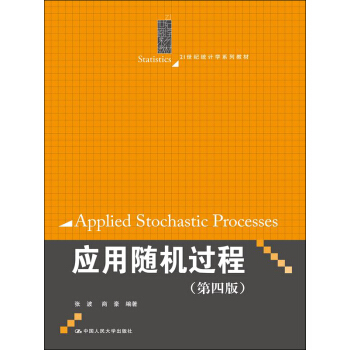


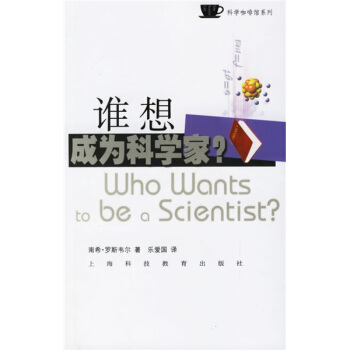
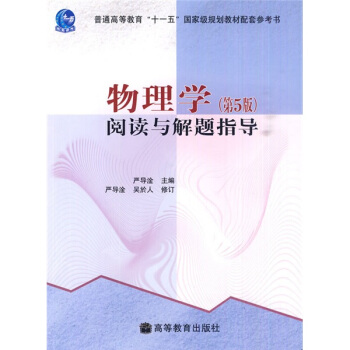

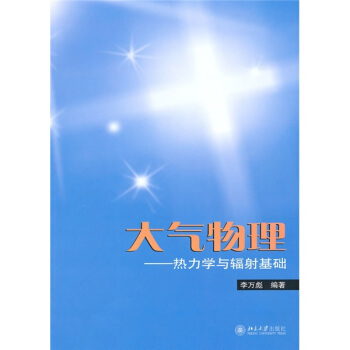
![混沌初開:自組織理論的哲學探索 [Chaos first open] pdf epub mobi 電子書 下載](https://pic.tinynews.org/10080967/c49058a0-7da0-4396-b6cc-5843878b68b1.jpg)
![天元基金影印數學叢書:分析2(影印版) [Analysis Ⅱ] pdf epub mobi 電子書 下載](https://pic.tinynews.org/10126498/56722a96N4b1afaa3.jpg)

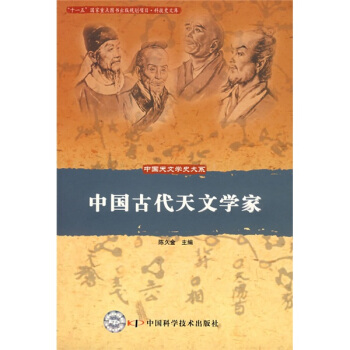
![算術教程(英文版) [A Course in Arithmetic] pdf epub mobi 電子書 下載](https://pic.tinynews.org/10184600/1a97631e-9708-4b40-8528-23dce5afd968.jpg)

